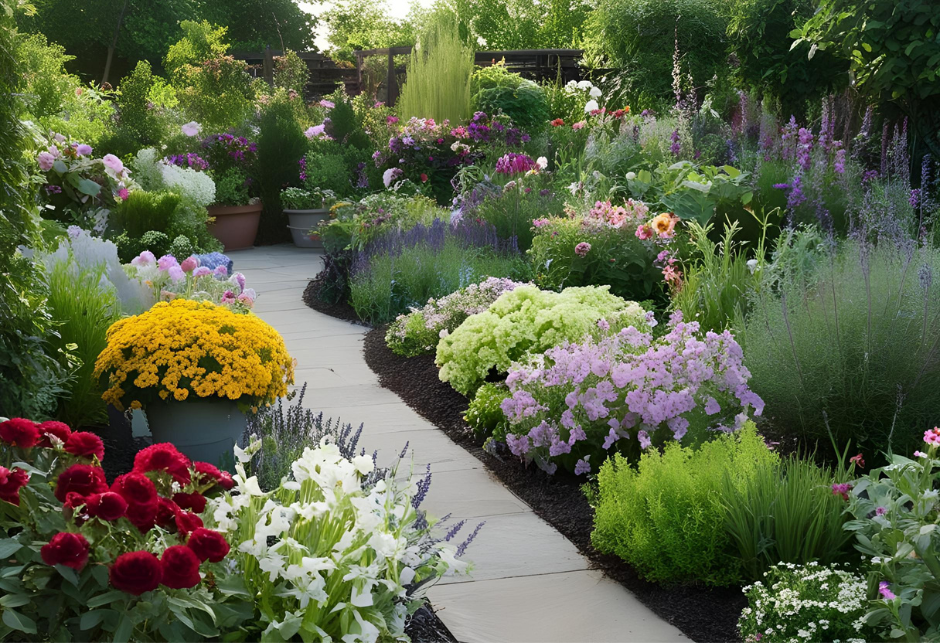
Discover the right choice for your garden goals with this simple, seasonal guide.
Planning your garden and wondering whether to plant annuals or perennials? You’re not alone! With so many stunning flowers available at your local nursery, it’s easy to feel overwhelmed. But making the right choice depends on your gardening style, your location, and what you want from your flower beds.
In this guide, we’ll explore the pros and cons of annuals and perennials—and why combining both might be the best decision for a garden that blooms beautifully all season long.
🌍 Start with Your Hardiness Zone
Before choosing any plants, it’s essential to know your USDA Plant Hardiness Zone. This helps you determine which perennials will thrive year after year in your region. Perennials that love warm climates might not survive a frosty winter, so always check the label or consult a local expert.
💡 Pro Tip: Use the USDA Zone Map to find your zone and make smarter choices for long-term success.
🌼 Why You’ll Love Annual Flowers
Annuals are the go-to choice for instant gratification in the garden. Here’s why gardeners love them:
1. Season-Long Color
Annuals bloom nonstop from spring to fall, delivering vibrant color for months. Think petunias, marigolds, zinnias, and begonias—all stars in any sunny spot.
2. Instant Impact
Need a wow factor for your porch, party, or front yard? Most annuals come pre-bloomed and ready to show off. Perfect for quick makeovers or special occasions.
3. Experiment-Friendly
Annuals are ideal for testing new color schemes, layouts, or flower combinations—without long-term commitment.
4. Budget-Friendly (Short Term)
Annuals typically cost less upfront than perennials. Just keep in mind, you’ll need to replant every year.
🌟 CTA: Want a garden that pops right away? Annuals are your best friend for fast, fabulous results.
🌿 Perennials: The Long-Term Garden Investment
Perennials may not bloom as quickly as annuals, but they offer solid benefits that grow over time.
1. They Come Back Year After Year
Plant them once, and they return each growing season—stronger and fuller than before. Perfect for building a garden with lasting structure and beauty.
2. Save Money Over Time
While they may cost more at first, you won’t have to rebuy them every spring. Many can also be divided after a few years—giving you even more plants for free!
3. Low-Maintenance and Water-Wise
Established perennials generally require less watering and care. Choosing native varieties makes them even more drought-tolerant and eco-friendly.
4. Year-Round Interest
Some perennials offer unique foliage, bark textures, or evergreen leaves that keep your garden attractive through all seasons.
🌟 CTA: Looking to build a garden that gets better with age? Perennials are your go-to for sustainable beauty and low-maintenance charm.
🌺 Why Not Have Both?
Here’s the secret: you don’t have to choose. The most captivating gardens blend annuals and perennials for a dynamic, layered effect.
How to Combine Them:
- Fill Gaps: Use annuals to plug holes between slow-growing perennials.
- Boost Color: Add bursts of color with annuals while perennials provide structure.
- Create Movement: Spread annuals throughout your beds to draw the eye across the landscape.
- Play with Texture: Mix bold, leafy perennials with delicate, flowering annuals for contrast.
🌿 Expert Tip: Group annuals in more than one area to create visual rhythm and harmony—not just a single focal point.
🌸 Final Thoughts
So, should you plant annuals or perennials? The answer depends on your goals:
- Want quick results and vibrant seasonal color? Go with annuals.
- Prefer long-term growth and lower maintenance? Choose perennials.
- Want the best of both worlds? Mix them together and enjoy a garden that evolves and delights all year long.
👉 Ready to plan your perfect flower bed? Start small, experiment freely, and let your garden reflect your creativity and care.
Would you like a printable garden planner or curated flower list by zone? Let me know, and I’ll prepare a free bonus resource just for you!
